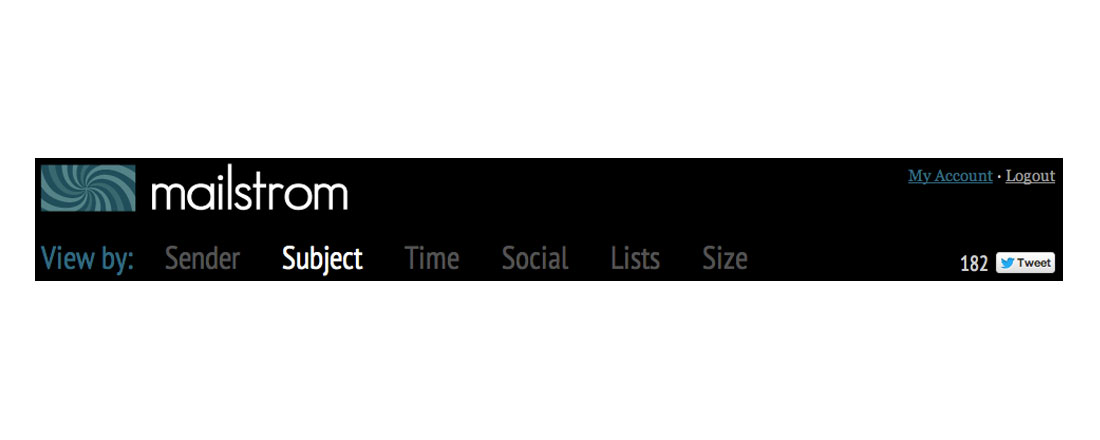Like many who have succumbed to the head-banging-into-a-wall aggravation that is an overfilled e-mail inbox, Dave Troy knew he needed help when some 1,500 messages wallowed in his inbox daily.
His solution? Mailstrom, a virtual cleaning service that connects to a person’s e-mail account, analyzes the contents, and catalogs all inbox messages according to the sender, subject, time of receipt, and message size. From there, Mailstrom users can delete e-mails outright, or use the move function to place them in folders of their choosing.
“I use it a couple times a day to blow up my inbox,” Troy says. “Now I can maintain inbox size 50.”
It’s fitting that Mailstrom is another product from Troy’s 410 Labs, the Canton-based product studio that creates “socially productive tools” and is responsible for Shortmail, which looks to eradicate online verbiage by limiting e-mails to no more than 500 characters. Troy says Mailstrom is “about maintaining relationships” in that it helps people remove the “crap” occupying space and otherwise diverting their attention from more pressing or important messages.
“There’s a lot of information in your e-mail that’s locked up,” Troy says. “We want to expose people to more of that, and give people more access to their own data.”
While Mailstrom downloads the metadata contained in e-mails–anything typed into the To, Cc and Bcc fields, plus subject lines–the application doesn’t store the contents of e-mail messages, and when a user does open an e-mail in Mailstrom, the message opens in a pop-up window that passes through to the Internet browser.
Similar to Mailstrom is the e-mail cleaner Inbox Zero, developed by Merlin Mann about five years ago. Although both apps are tools to remove inbox clutter, Mann’s program does this by breaking inbox e-mails into five definable actions: Delete, Delegate, Respond, Defer. and Do. Troy’s system acts more like a sorting device, showing people, for instance, the number of e-mails from your mother, which may be unfairly waiting in your inbox. (My first go with Mailstrom yielded 39 separate e-mails from one Mother Zaleski, several of which hadn’t been responded to. Whoops.)
“We’re experimenting with what data to display, figuring out what really matters to people,” Troy says.
Troy, responsible for founding the Canton co-working space Beehive Baltimore, built the first iteration of Mailstrom over Baltimore’s Startup Weekend in April 2011, a year after founding 410 Labs with Matthew Koll. He put its development on hold to finish developing Shortmail.
Four months ago he began work again on Mailstrom, which was released in beta form at the beginning of June. Right now Troy and his team are continuing to test Mailstrom before releasing it to a broader audience, but beta users will soon will have the opportunity to invite other people to try it out. As of yet Troy has no plans to charge for using Mailstrom, although he thinks that might change in the future.
“Once you get used to using it, life kind of sucks without it,” he says. “We think people will be willing to pay for it.”
Join the conversation!
Find news, events, jobs and people who share your interests on Technical.ly's open community Slack

This Black gaming advocate has a mission to transform education through esports

Is AI really something new — or just the next big technology platform?

This Week in Jobs: Get out there with 22 new job opportunities available to you!

